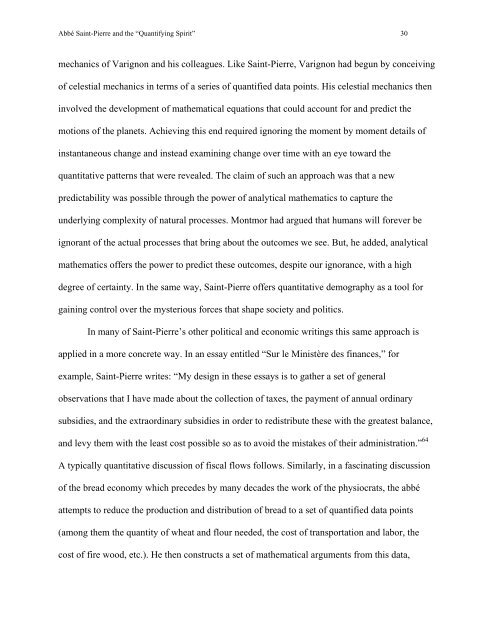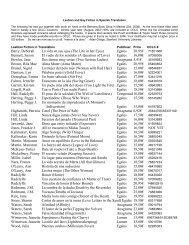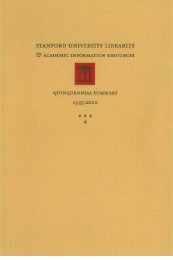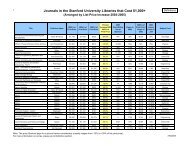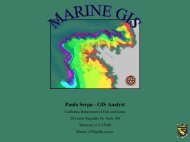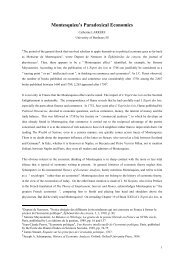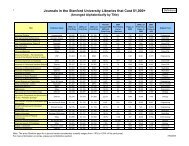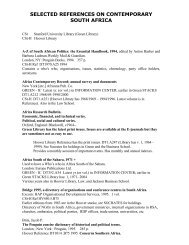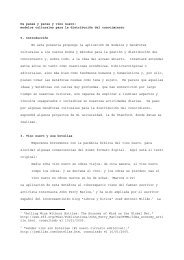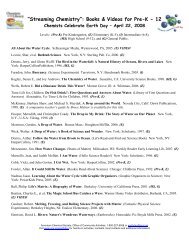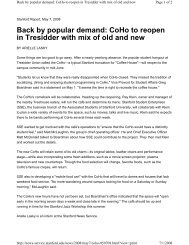The Abbé de Saint-Pierre and the Emergence of the 'Quantifying ...
The Abbé de Saint-Pierre and the Emergence of the 'Quantifying ...
The Abbé de Saint-Pierre and the Emergence of the 'Quantifying ...
Create successful ePaper yourself
Turn your PDF publications into a flip-book with our unique Google optimized e-Paper software.
Abbé <strong>Saint</strong>-<strong>Pierre</strong> <strong>and</strong> <strong>the</strong> “Quantifying Spirit” 30<br />
mechanics <strong>of</strong> Varignon <strong>and</strong> his colleagues. Like <strong>Saint</strong>-<strong>Pierre</strong>, Varignon had begun by conceiving<br />
<strong>of</strong> celestial mechanics in terms <strong>of</strong> a series <strong>of</strong> quantified data points. His celestial mechanics <strong>the</strong>n<br />
involved <strong>the</strong> <strong>de</strong>velopment <strong>of</strong> ma<strong>the</strong>matical equations that could account for <strong>and</strong> predict <strong>the</strong><br />
motions <strong>of</strong> <strong>the</strong> planets. Achieving this end required ignoring <strong>the</strong> moment by moment <strong>de</strong>tails <strong>of</strong><br />
instantaneous change <strong>and</strong> instead examining change over time with an eye toward <strong>the</strong><br />
quantitative patterns that were revealed. <strong>The</strong> claim <strong>of</strong> such an approach was that a new<br />
predictability was possible through <strong>the</strong> power <strong>of</strong> analytical ma<strong>the</strong>matics to capture <strong>the</strong><br />
un<strong>de</strong>rlying complexity <strong>of</strong> natural processes. Montmor had argued that humans will forever be<br />
ignorant <strong>of</strong> <strong>the</strong> actual processes that bring about <strong>the</strong> outcomes we see. But, he ad<strong>de</strong>d, analytical<br />
ma<strong>the</strong>matics <strong>of</strong>fers <strong>the</strong> power to predict <strong>the</strong>se outcomes, <strong>de</strong>spite our ignorance, with a high<br />
<strong>de</strong>gree <strong>of</strong> certainty. In <strong>the</strong> same way, <strong>Saint</strong>-<strong>Pierre</strong> <strong>of</strong>fers quantitative <strong>de</strong>mography as a tool for<br />
gaining control over <strong>the</strong> mysterious forces that shape society <strong>and</strong> politics.<br />
In many <strong>of</strong> <strong>Saint</strong>-<strong>Pierre</strong>’s o<strong>the</strong>r political <strong>and</strong> economic writings this same approach is<br />
applied in a more concrete way. In an essay entitled “Sur le Ministère <strong>de</strong>s finances,” for<br />
example, <strong>Saint</strong>-<strong>Pierre</strong> writes: “My <strong>de</strong>sign in <strong>the</strong>se essays is to ga<strong>the</strong>r a set <strong>of</strong> general<br />
observations that I have ma<strong>de</strong> about <strong>the</strong> collection <strong>of</strong> taxes, <strong>the</strong> payment <strong>of</strong> annual ordinary<br />
subsidies, <strong>and</strong> <strong>the</strong> extraordinary subsidies in or<strong>de</strong>r to redistribute <strong>the</strong>se with <strong>the</strong> greatest balance,<br />
<strong>and</strong> levy <strong>the</strong>m with <strong>the</strong> least cost possible so as to avoid <strong>the</strong> mistakes <strong>of</strong> <strong>the</strong>ir administration.” 64<br />
A typically quantitative discussion <strong>of</strong> fiscal flows follows. Similarly, in a fascinating discussion<br />
<strong>of</strong> <strong>the</strong> bread economy which prece<strong>de</strong>s by many <strong>de</strong>ca<strong>de</strong>s <strong>the</strong> work <strong>of</strong> <strong>the</strong> physiocrats, <strong>the</strong> abbé<br />
attempts to reduce <strong>the</strong> production <strong>and</strong> distribution <strong>of</strong> bread to a set <strong>of</strong> quantified data points<br />
(among <strong>the</strong>m <strong>the</strong> quantity <strong>of</strong> wheat <strong>and</strong> flour nee<strong>de</strong>d, <strong>the</strong> cost <strong>of</strong> transportation <strong>and</strong> labor, <strong>the</strong><br />
cost <strong>of</strong> fire wood, etc.). He <strong>the</strong>n constructs a set <strong>of</strong> ma<strong>the</strong>matical arguments from this data,


